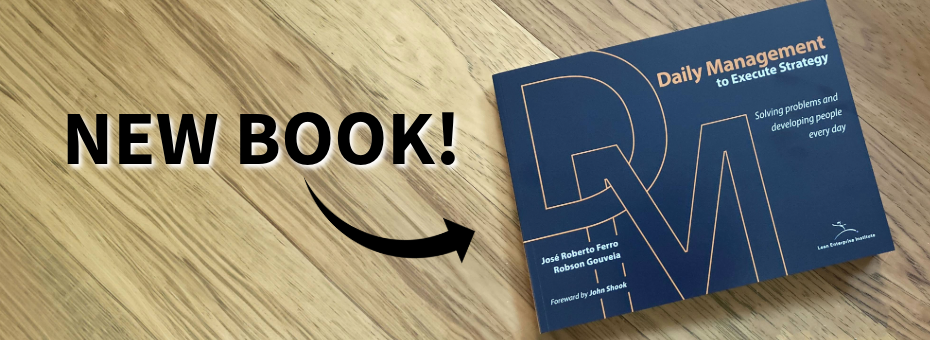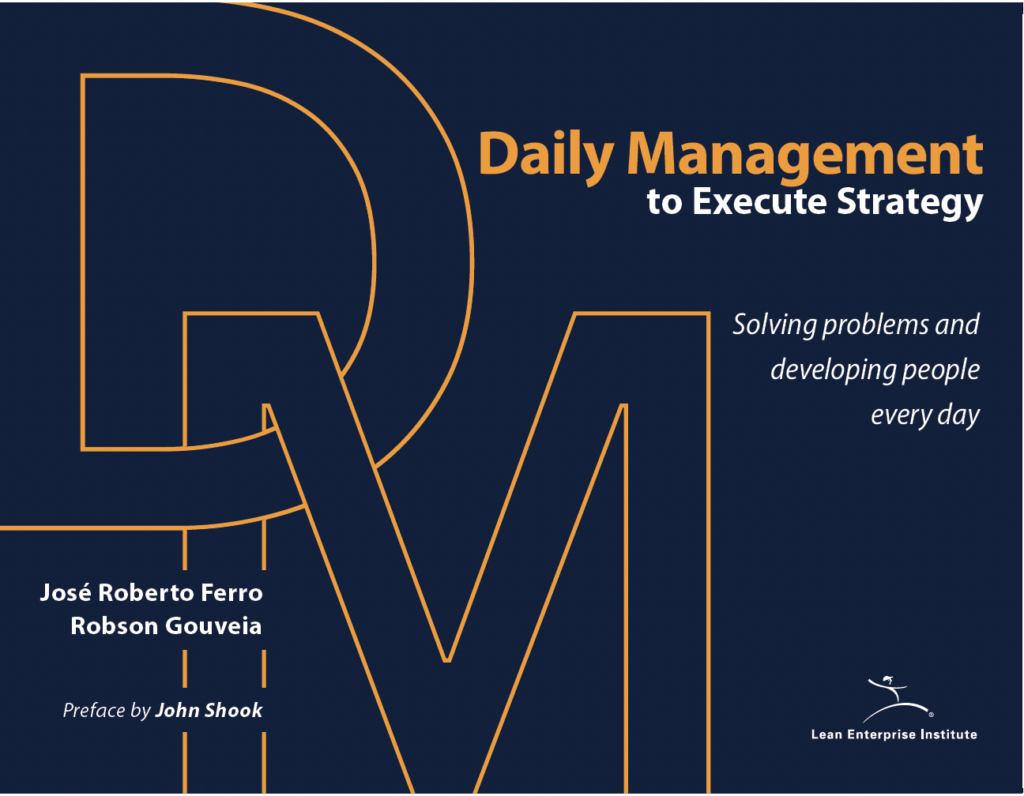One of the most important discoveries of the Lean Community over the past 30 years has been that lean techniques cannot create sustainable lean enterprises without a lean management system. And we are now many years into experiments in creating such systems.
My first involvement with these experiments was as an advisor on Pascal Dennis’ 2006 volume, published by LEI, Getting the Right Things Done. It advocated starting by determining an organization’s north star, identifying the hoshins needed to move the organization in the right direction, and then deploying the strategy down through the organization, introducing improvement management (through A3 and kaizen) and daily management for basic stability, as needed. I loved (and still love) Pascal’s book, but many organizations found the method beyond their capabilities. In other words, they couldn’t deploy strategy deployment, often due to the basic instability of their processes.
My next encounter was as editor of Jim Lancaster’s 2017 volume, The Work of Management (also published by LEI). Based on many years of experience with failed hoshin planning in his manufacturing company, Lantech, Jim decided that the place to begin in developing a lean management system was at the gemba – in the factory, engineering, purchasing, customer service, and anywhere else – where value was being created for customers. He proposed achieving basic stability in every value-creating process through daily management to quickly detect and countermeasure every problem so that managers no longer devoted most of their energy to dealing with crises as problems metastasized. They would then have time to conduct robust improvement activities (kaizen) on top of a stable foundation and to conduct hoshin planning with confidence that the hoshin objectives could be achieved. (The kaizen and hoshin processes would themselves benefit from the daily management methods developed for the gemba.)
Both books sold well, and many experiments were tried, but, as I have visited companies in the post-pandemic world, I have discovered that lean management has been introduced in only a small fraction of organizations. So, I was interested when José Ferro (my partner in founding the Lean Global Network in 1998) and Robson Gouveia (who learned about lean thinking at Alcoa as a participant in its remarkable lean transformation in the 1990s) approached LEI with a proposal to publish the English version of their new book Daily Management to Execute Strategy, which LEI published October 15.
What’s new in their approach is their proposal to work from the top and bottom of an organization at the same time. And to implement their method through a remarkably detailed series of steps that I think readers will find very helpful as a guide. Perhaps this can be the key to success for many organizations daunted by the challenge of where and how to start.
The core of their method is face-to-face daily meetings in front of boards in each operational area of an enterprise followed by daily meetings at higher levels of management up to the senior leadership.
These boards have three sections.
On the left are the objectives of the area or the whole organization as dictated by the organization’s hoshin objectives. For example, to reduce rework by 90% in three months in an operational area or to increase the customer satisfaction index by 20% in the next six months in a service department. In addition, there is always an objective for every indicator to steadily reduce variation in daily performance by rapidly tackling every anomalous event along the path to improved performance.
In the middle of the board is the performance achieved day by day and the gap from expectations. For indicators tied to hoshin objectives, the daily target may not be static but instead steadily (or at least periodically) improving. Every number is green or red and all attention is focused on a rapid response to red.
On the right of the board are the problem-solving methods to be employed, the current list of problems to be solved along with the chosen method, and the expected time and responsible person for the resolution of each problem.
Problems that can be countermeasured at lower levels never move beyond the lower levels. When escalation is necessary, it is through a carefully specified “help chain” to daily management meetings at higher levels in front of higher-level boards. The boards focusing these meetings include the same three sections of true north objectives, actual performance today, and the appropriate countermeasures with a responsible person. At this level, it may also be helpful to track end-to-end metrics that run across departments.
This simple method of daily meetings in front of boards at operational and management levels turns out to be a heavy lift for any organization. It requires managers to provide needed assistance to lower levels rather than swooping in with answers and demands more management time at the beginning to reduce the waste of management later, notably the waste of firefighting without truly solving problems. And it also requires building problem-solving capability in every employee at every level. (Otherwise, the default is to delegate problems to corporate staff in operational excellence, quality, manufacturing engineering, etc., where they can be Paretoed and solved much later, if ever.)
But with all its difficulty, this is an experiment worthy of serious effort in every organization. We only make progress through rigorous experiments, and not trying experiments and then more experiments guarantees that there will be no progress.
Getting the Right Things Done and The Work of Management, now joined by Daily Management to Execute Strategy, are a treasure trove of ideas for creating a complete lean management system, and I’m hoping we may now be at a tipping point in adoption across the lean community. But we have also learned that every organization must run its own experiments to find its own best method as we all continue our journey toward lean management as the essential foundation for a sustainable lean enterprise. So, let’s keep experimenting with management systems and sharing experimental results as a core activity of our movement.






I work for an organization whose work system is almost entirely remote. Have you implemented a daily management system where the majority of front-line staff are remote and if so, how? I constantly run into a lack of engagement doing things virtually. Would appreciate any insights or feedback you have. Thank you